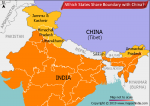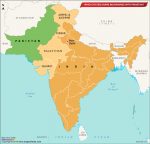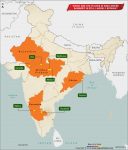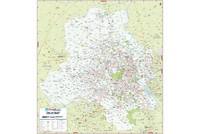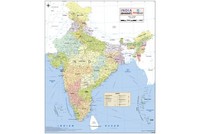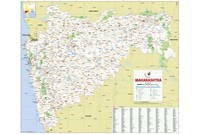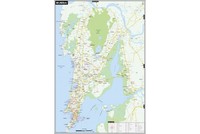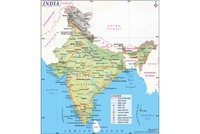Nargis, one of the leading actresses of Indian cinema, was born as Fatima Rashid on 1 June 1929, and grew up in Bombay (now Mumbai). Her father was originally from Rawalpindi and mother, Jaddanbai, was a singer and dancer.
Fatima started acting in films when she was just six, under the adopted screen name of “Baby Nargis.” She was henceforth known as Nargis throughout her life.
“Nargis had a happy childhood but matters deteriorated rapidly after her parents died in 1948. She became the sole breadwinner in a very extended family. Nineteen of them lived in a three bedroom flat on Marine Drive. Visiting relatives were accommodated on seven charpoys lined up in the corridor outside the bedrooms,” Bhaichand Patel wrote in Outlook magazine in his review of Kishwar Desai’s book Darlingji, The True Love Story of Nargis and Sunil Dutt.
Her first adult role was in the 1943 film Taqdeer, directed by Mehboob Khan. Barely in her teens at the time, she starred opposite the 33-year old Motilal.
Following this she acted in a number of films such as Humayun and Mela. One of her early significant films was the 1948 Aag, in which she was paired opposite Raj Kapoor for the first time. The two went on to become one of the most famous on-screen couples of Hindi cinema. In Aag, Kewal Khanna (played by Raj Kapoor), a theatre artist, gives a new actress Nimmi (played by Nagris) a chance to work in his ambitious play, thanks to the patronage of the wealthy Rajan (played by Prem Nath). But there’s a twist in the tale when Rajan falls in love with Nimmi. The young Nargis was noticed for her performance.
A hit pair
From the late 1940s and through the next decade, Nargis played some of her most memorable roles in films such as Barsaat, Awaara and Shree 420, most of them opposite actor-director Raj Kapoor.
“In Barsaat, she (Nargis) makes her appearance after more than half an hour of the film but she owned the movie with her mix of impish charm — she scrunches her nose while talking — and her passionate pathos when her love is tested…,” Harneet Singh wrote in The Indian Express in November 2013.
Another movie which won acclaims was the 1951 Raj Kapoor-Nargis-starrer Awaara, which is considered to be one of Kapoor’s best works as director. The romance between the lead pair caught the imagination of a newly-independent India, and the film's starkly socialist theme made it very popular outside India too, especially in the Soviet Union and central Asia.
In an article on Awaara in October 2013 in rediff.com, Sukanya Verma wrote: “Nargis is bewitching as the woman in love with varying avatars — the sprite of Bollywood’s most extravagant dream, seductive siren on the beach or a determined lawyer, defending her sweetheart in the courtroom.”
Nargis, famously, wore a swimsuit in the film, which was quite a sensation in that era.
Other than Raj Kapoor, Nargis was often paired opposite the legendary Dilip Kumar.
Mother India and beyond
Nargis played arguably her most important role in the 1957 film Mother India, for which she bagged her first Filmfare Award for best actress.
Often considered to be among the greatest works in Hindi cinema, Mother India saw Nargis play the part of Radha who amid extreme hardship raises her two sons alone in rural India. In many ways Radha became a symbol of Indian motherhood.
As M L Dhawan wrote in The Tribune in April 2003, “As Radha in Mehboob Khan’s Mother India, Nargis imbued divinity to motherhood/womanhood. In the climax scene when Radha guns down her fugitive son Birju (Sunil Dutt), the feelings of seething anguish and tearing rage on her face are to be seen, to be believed. Mother India remains a crowning glory for Nargis as an actress. The image of Nargis balancing a plough on her fragile shoulders simply refuses to fade away from the memory of the cine-goers.”
Nargis later married actor Sunil Dutt, who is said to have rescued her from a fire on the sets of Mother India.
She received the Padma Shri award in 1958. She appeared in fewer films after 1958. Her last appearance in a film was in 1968. In 1980, she was nominated to the Indian Parliament as a member of the Rajya Sabha. She died on 3 May 1981 after a battle with cancer.
One of the legends of Indian cinema, Nargis was a superstar of her time and is counted among other top heroines such as Madhubala and Nutan. Her roles in films such as Awaara and Mother India made created a special place for her in the history of Indian cinema.
Also on this day:
1842 — Satyendranath Tagore, first Indian to join the Indian Civil Service, was born
1985 — Dinesh Karthik, Indian cricketer, was born
1987 — Khwaja Ahmad Abbas, Indian film director and screenwriter, passed away
1996 — Neelam Sanjiva Reddy, sixth President of India, passed away
WBSKA31052014

